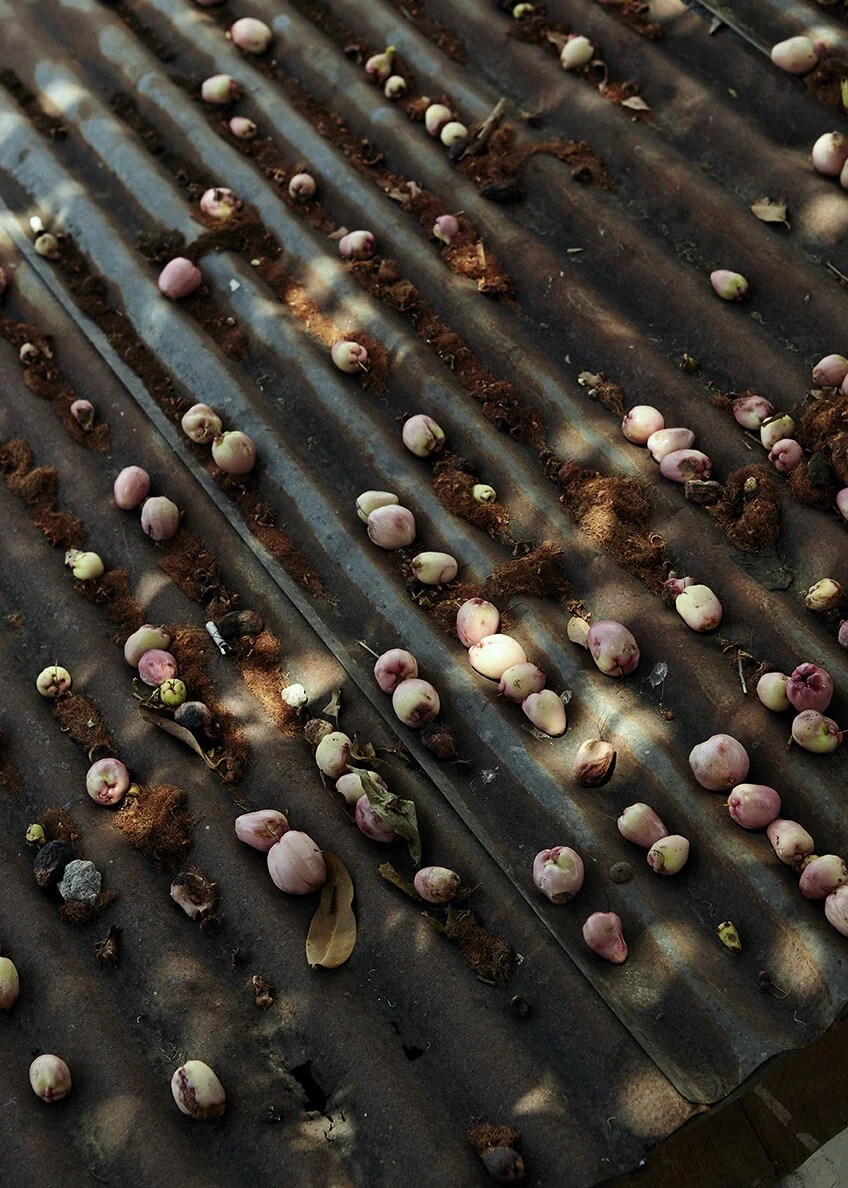Indonesia with Sam Harris
Words & photography by Sam Harris
Leaving Labuan Bajo airport on an empty, beat-up road, entirely unconfident I was going the right way, a kid on a moped beeps his horn at me and pulls over, asking me where I’m going. I try to shake him off, saying with typical western skepticism I don’t have any money, and that I’ll walk. He’s really persistent. He tells me he doesn’t want money, and he’ll give me a ride to town on the back of his bike. So I hop on. Through the dust and wind we chat about Indonesia, and where I’m from. One mention of England and he’s declaring his love for Manchester United and Wayne Rooney, all whilst taking some sketchy looking corners. His innocent, care free attitude stuck with me, and turns out he’s not the only Indonesian with this refreshing outlook.
Made up of over 17,000 islands, Indonesia is pretty vast. The variety you see in this country is incredible, from the food and people, through to the differences in landscape from island to island. Nowhere does this ring more true than Flores. Starting in the west, after a ride from my moped friend, I soon found myself in Komodo National Park, home of the legendary Komodo Dragon. With its white beaches, turquoise waters, arid volcanic islets, and of course, giant man-eating lizards, Komodo seemed to have it all. After seeing the lizards on a very chill day, basking in the heat, I traversed across the island via the only main road, the aptly named ‘Trans-Flores Highway’, through to the volcanic heart of the island. Here volcanoes were climbed, views seen, and much fried rice eaten.
Indonesian food generally isn’t what first springs to mind when you mention Asian cuisine, but if you take the time to seek out the good stuff you’ll be rewarded. As expected, there are many rice-heavy dishes, undoubtedly the most famous being nasi goreng. Nasi goreng can vary considerably, but in its purest form it can be as simple as fried rice, spiced with kecap manis, a type of soy sauce sweetened with palm sugar. Another important ingredient in Indonesian cuisine is sambal. This is essentially a chili sauce, often enhanced with shrimp paste and other aromatics. The intensity of the chili can vary hugely, so take it from me, start with less and build up.
With Indonesia being so huge, as expected the food varies hugely, with many local specialties. One such specialty being the Balinese dish of babi guling - which translates to ‘turning pig’. Indonesia has the largest Muslim population in the world, so pork seems an unlikely choice, but Bali is an anomaly: much of the population practices an offshoot of Hinduism. And I’m so glad they do, because babi guling is a revelation. Spit-roast pig, slathered in a secret mix of spices and aromatics until meltingly tender, served up with rice, blood sausage, and a shard of the crispiest pig skin.
Made up of over 17,000 islands, Indonesia is pretty vast. The variety you see in this country is incredible, from the food and people, through to the differences in landscape from island to island.
Indonesia's most populous island, Java, was next on my list, for temples, coffee, and of course more volcanoes. Like Flores, it’s not long before I’m being chatted to by intrigued locals. As I’m struggling to find a scooter to rent, I’m approached by Fred. Fred was born and raised in Indonesia, and works directly with farmers trying to broaden their horizons in terms of crops that they can grow. Most farmers grow rice as it’s all they know - their parents grew it, and before that their grandparents did the same. The idea is that eventually more farmers grow a greater variety of crops, being far more lucrative and beneficial for the farmers, as well as the land.
So Fred invited me into his modest family home, and shows me some of the incredible products his farmers are making; like pure palm sugar, wrapped in a leaf and then sliced up. The taste is unlike any sugar I’ve tasted before. The texture is almost like crumbly fudge, with a deep caramelised and butterscotch flavour. Of course, no tasting would be complete without being rounded off with arak, a potent spirit made from distilled coconut palm sap. Fred pours some onto the glass table and sets it alight to show the alcohol content; I may not remember what it tasted like (for whatever reason…), but I can tell you that this hospitality spreads across the whole of Indonesia. You might come for the beaches and volcanoes, but you’ll certainly stay for the incredible food and the charming people.











